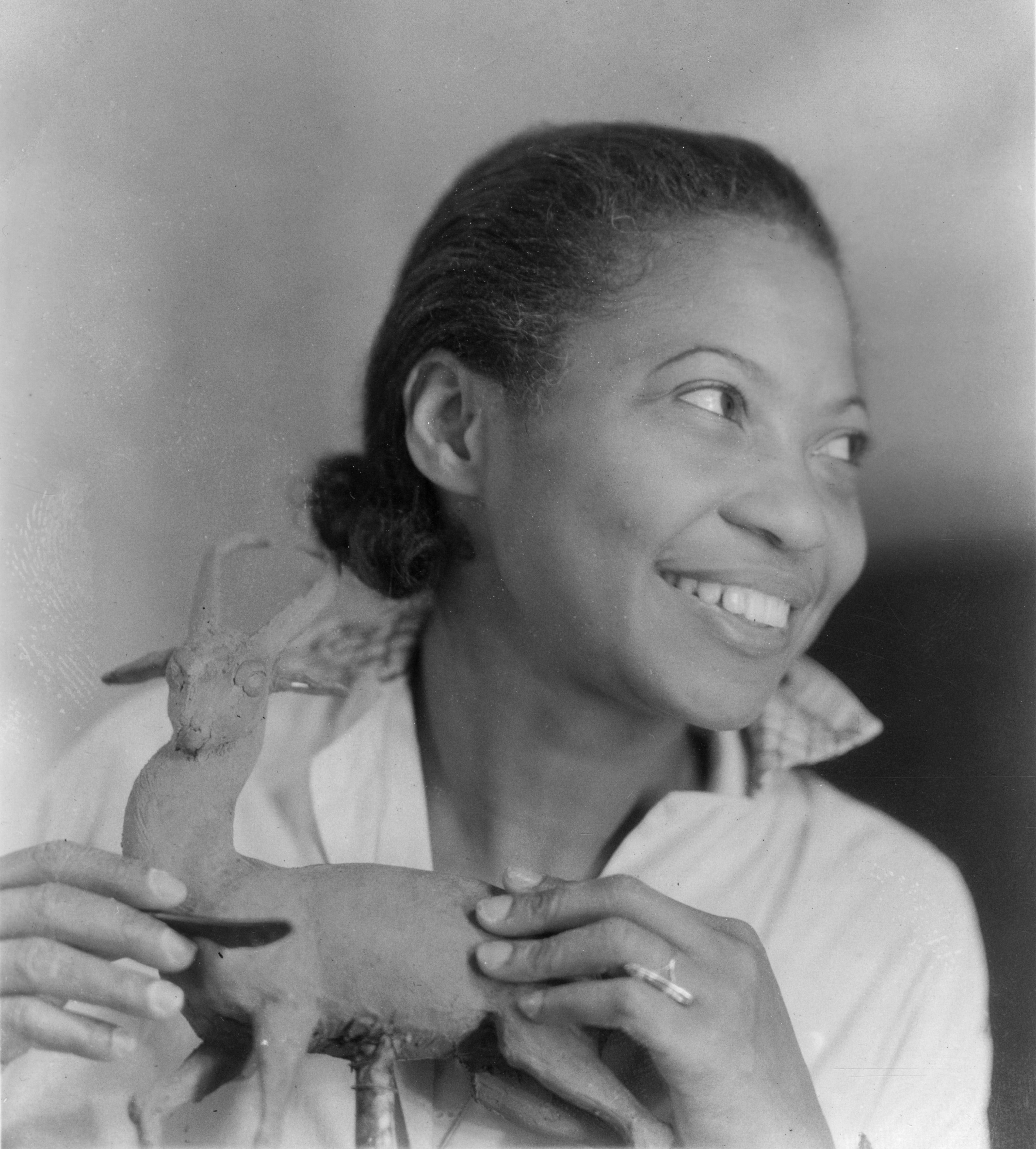Savage, Augusta (1892-1962), was a Black American sculptor and influential art teacher during the Harlem Renaissance. The Harlem Renaissance was a significant movement in African American literature and other arts during the 1920’s and early 1930’s. Savage typically worked in plaster, creating sculptures meant to be cast in bronze. However, Savage could not afford bronze. As a result, most of her sculptures went uncast, and the plaster originals have been destroyed or damaged. Savage’s talent has been recognized after her death, but most of her artwork remains missing.

Savage’s sculptures take their subjects from the Black American experience. Her most successful work was The Harp (Lift Every Voice and Sing), a tribute to the musical contributions of Black Americans. The Harp was a 16-foot (5-meter) tall painted plaster statue. Twelve singers stand in for the strings of the harp, with a man kneeling in front holding sheet music. The base of the harp, supporting the strings, was a large arm and hand. The sculpture was commissioned for and displayed at the 1939 New York World’s Fair.
Augusta Christine Fells was born Feb. 29, 1892, in Green Cove Springs, Florida, near Jacksonville. Her father, a Methodist minister, disapproved of her early creativity in art. The principal at her high school, in West Palm Beach, recognized Savage’s talent and asked her to teach a clay modeling class. She married James Savage in 1915, but they soon divorced. After winning an award at the West Palm Beach County Fair in 1919, Savage moved to New York City.
Savage was accepted into many renowned art programs and schools, but her lifelong struggle with poverty kept her from many opportunities. She worked at a steam laundry, an industrial laundromat, to provide for her family. Savage received a scholarship to the Cooper Union School of Art in New York City and graduated from the four-year program in three years. She was accepted to the Fontainebleau School of Fine Arts in France. However, her acceptance was rescinded (taken back) when the committee found out she was Black. Savage was commissioned by New York City’s Harlem Library to make busts of W. E. B. Du Bois, the American sociologist and civil rights activist, and other notable civil rights leaders. In 1929, Savage was given funds and awarded a fellowship to study in France. There, Savage exhibited her work at the Grand Palais. In 1934, Savage became the first Black American elected to the National Association of Woman Painters and Sculptors. She started her own studio, where she gave free art classes. Savage died of cancer on March 26, 1962.
